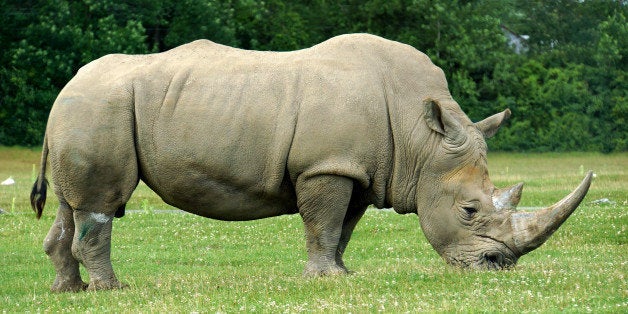
Last week, a northern white rhino was euthanized at the San Diego Zoo Safari Park, bringing the species one step closer to extinction. Only three northern white rhinos cling to life on a Kenyan reserve, and these two bits of information--death in captivity and disastrously depleted numbers in the wild--suggest that we're not doing all we can to save imperiled wildlife, and that life in a zoo, however brief, is not the hedge against extinction that the zoo industry would like you to believe.
We have seen time and again that wild animals who languish in captivity do not benefit conservation and do not instil in our children the information and education that will contribute to the animals' survival. Instead, captivity is simply that--captivity. It is a life behind bars, whatever those bars may look like, thousands of miles removed from where the solution to survival exists: in the wild.
At the same time this captive northern white rhino was euthanized, a South African court has overturned a ban on domestic trade in rhino horn in that country. This is a shocking and perturbing development for a southern African country that simultaneously has captive rhino farms where the animals are bred for export overseas; whose government is clearly advocating for a legalized international rhino horn trade; and where more than 1,200 rhinos were poached last year, compared to only 13 in 2007.
What all of these seemingly disparate issues clearly present is a situation in which South Africa wants to profit from dead rhinos while it is incapable of protecting its wild rhinos from poachers.
It's time for South Africa to get its internal house in order before putting the remaining wild rhinos across Africa and Asia at risk. Any legal trade in rhino horn within South Africa opens up a laundering opportunity for rhinos to be poached elsewhere, including Kenya, and for the horns to be laundered into South Africa's domestic trade. And, if South Africa succeeds in opening an international trade, all bets are off--and there will, without exaggeration, be a price on the head of every rhino across the continent.
The next meeting of the Parties to the Convention on International Trade in Endangered Species (CITES) will take place in September 2016 in South Africa. We learned all too well in 1997, when the CITES meeting was hosted in Harare, Zimbabwe (and the elephant ivory trade was reopened for Zimbabwe, Botswana, and Namibia), that there is a significant home field advantage in hosting a meeting like this. While South Africa may push hard next year to force its brand of "wildlife conservation" on the rest of the world, the other 180 Parties to CITES must stand firm and not accept South Africa's hollow rhetoric on this issue.
Legalizing trade in wildlife does not help wild animals, and neither does breeding the animals for sale in captivity. The 1970s and 1980s saw the African elephant population cut in half because of poaching for the ivory trade... while a supposedly regulated international ivory trade existed. Tigers are bred in captivity on Chinese tiger farms for their parts, which not only stimulates demand but leads to wild tiger poaching in India. Bears are incarcerated in barbaric farms in China and throughout southeast Asia for both their bile and their gallbladders (and sometimes their paws) while American black bears from coast to coast throughout North America are shot in the wild, their abdomens sliced open, and their gallbladders ripped out to feed the global trade.
It is remarkably simple when it comes to wildlife trade, whether it's elephants, tigers, bears, or indeed rhinos. There should be no trade, no breeding, no domestic sale--only an unequivocal, uniform, global trade ban and full protection for the species.
There are a number of states across the U.S. that understand this to be the case and where bills to prevent the domestic trade in elephant ivory, rhino horn, and other species are being considered. Whether it's Massachusetts or Michigan, we can all do right by rhinos if we stop the rhino horn trade.
Time is clearly slipping away from rhino species, and there is no room for risky experimentation with breeding, domestic sale, or international trade. For every rhino lost, black rhinos, northern white rhinos, southern white rhinos, and their Asian cousins inch closer to extinction... and we know that it's happening. If we fail to act when these facts are so obvious, shame on us.
Keep Wildlife in the Wild,
Adam
